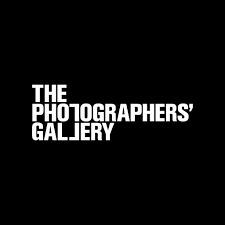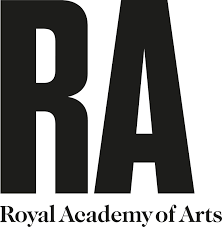The Ultimate Guide to Conservation and Museum Quality Framing
Conservation and Museum quality framing is essential to preserve priceless artworks and heirlooms for future generations. SE1 Picture Frames offers the full range of conservation and museum picture framing

Conservation and Museum Quality Framing
When it comes to preserving priceless artworks, heirlooms, or important documents, conservation and museum-quality framing are essential. These specialised framing techniques ensure that your valuable pieces are protected from environmental damage, aging, and other potential risks. In this article, we will explore the importance of conservation framing, the role of UV-protection glass, and why museum-quality standards are crucial for preserving your most treasured items.
What Is Conservation Framing?
Conservation framing is a specialised framing technique designed to protect and preserve artworks, documents, and other valuable items for the long term. Unlike standard framing, conservation framing uses archival-quality materials that are free from acids and other harmful chemicals, ensuring that your items do not deteriorate over time.
Key Features of Conservation Framing:
- Acid-Free Mount boards: Protects artwork from yellowing and degradation.
- UV-Protection Glass: Shields against harmful ultraviolet rays that can cause fading and discolouration.
- Archival Tapes and Hinges: Used to mount the artwork securely without causing any damage.
Learn more about our conservation framing services.
The Importance of UV-Protection Glass in Conservation Framing
One of the most critical elements in conservation framing is the use of UV-protection glass. UV rays from sunlight and even artificial lighting can cause significant damage to artworks and documents over time. This damage includes fading, discoloration, and even structural weakening of the materials.
How UV Rays Damage Art:
- Fading of Colours: Prolonged exposure to UV rays can cause vibrant colors to fade.
- Yellowing of Paper: Paper-based items, such as photographs and documents, can yellow and become brittle.
- Degradation of Materials: UV exposure can weaken the structural integrity of fabrics, wood, and other materials.
Using UV-protection glass in conservation framing is a proactive measure to prevent these issues, ensuring that your art remains as beautiful and vibrant as the day it was framed.
Why Museum Quality Framing Matters
Museum-quality framing goes hand in hand with conservation framing. When you choose museum-quality standards, you’re opting for the highest level of protection and preservation for your artwork. This type of framing is often used by museums, galleries, and collectors who need to ensure the longevity of their collections.
Benefits of Museum Quality Framing:
- Superior Material Quality: Only the best, archival-grade materials are used.
- Precision Craftsmanship: Meticulous attention to detail ensures that the artwork is perfectly framed and protected.
- Long-Term Preservation: Ensures the artwork remains in pristine condition for generations.
By combining conservation techniques with museum-quality standards, you can be confident that your artwork is receiving the best possible care.
Discover our museum-quality framing options.
Choosing the Right Materials for Conservation Framing
When it comes to conservation framing, choosing the right materials is crucial. Each component of the frame, from the mount board to the backing, plays a role in protecting your artwork.
Key Materials in Conservation Framing:
- Acid-Free Mount board: Prevents direct contact between the artwork and the glass, while also protecting against acidity.
- UV-Protection Glass: Blocks up to 99% of harmful UV rays.
- Archival-Quality Backing: Provides a stable and protective environment for the artwork.
- Non-Acidic Tapes and Adhesives: Ensure that no harmful substances come into contact with the artwork.
Using these materials, conservation framing not only enhances the aesthetic appeal of the artwork but also ensures its longevity.
The Process of Conservation and Museum Quality Framing
Conservation and museum-quality framing require a meticulous process that involves careful planning and execution. Here’s a brief overview of the steps involved:
- Assessment: Evaluate the condition of the artwork and determine the best conservation methods.
- Material Selection: Choose the appropriate archival materials, including matboards, glass, and backing.
- Mounting: Secure the artwork using non-invasive methods that do not damage the item.
- Framing: Assemble the frame with precision to ensure perfect alignment and protection.
- Sealing: Seal the frame to protect against dust, moisture, and other environmental factors.
This careful process ensures that every piece framed with conservation and museum-quality standards is preserved for the long term.
See our full range of conservation framing services.
Tips for Maintaining Conservation Framed Artworks
Once your artwork is framed using conservation techniques, it’s important to maintain it properly to ensure its longevity. Here are some tips:
- Avoid Direct Sunlight: Even with UV-protection glass, it’s best to keep artworks out of direct sunlight.
- Control Humidity: Maintain a stable environment with moderate humidity to prevent warping or mold growth.
- Regular Cleaning: Dust the frame and glass regularly using a soft, dry cloth.
- Inspect Periodically: Check for any signs of deterioration or damage and address them promptly.
By following these simple maintenance tips, you can keep your conservation-framed artwork looking its best for years to come.


Why Choose SE1 Picture Frames for Conservation and Museum Quality Framing?
At SE1 Picture Frames, we understand the value of your artwork and the importance of preserving it for future generations. Our conservation and museum-quality framing services are designed to offer the highest level of protection and care. With our expertise and commitment to quality, you can trust that your valuable items are in safe hands.
SE1 Picture Frames works with galleries, museums, collectors and artists all over the world protecting and presenting work for future generations:

Explore our conservation framing services and museum-quality options.
Conclusion
Conservation and museum-quality framing are essential for anyone looking to preserve their valuable artwork, documents, or heirlooms. By choosing the right materials, using UV-protection glass, and following museum-quality standards, you can ensure that your treasures are protected from the ravages of time and the environment. Trust SE1 Picture Frames to provide the expert care and precision needed to keep your valuable pieces safe for generations to come.
Some of the brands we’ve worked with...
Our Workshop
Our workshop is equipped to handle a wide range of specialist and bespoke projects. Undertaking small and large projects alike, we cater for artists, designers, galleries, museums, photographers and corporate and private clients. Orders range from single frames to framing works for large exhibitions.
Address
BY APPOINTMENT ONLY
SE1 Picture Frames, Alaska Buildings,
61 Grange Road, London,
SE1 3BH, United Kingdom
Nearest tube: London Bridge, Bermondsey, Borough
Bus: Number 1 and 78.
Free visitor parking available:
Entrance is via Bacon Grove just off Grange road. Enter the Alaska Buildings through the large electric gate. Push buzzer and speak to security to gain access.
Email Address
Phone Numbers
Contact us
We are usually on site but to avoid disappointment and to allow us plenty of time to discuss your project with you, please contact us and book an appointment before you set off.
On arrival please report to security.
Request a Quote
Please be aware that an accurate quote is usually only possible once we have seen the art work and discussed all possibilities with you. Our standard framing is to conservation standards and this will be reflected in the quote unless otherwise specified.
Our Blog

5 Common Canvas Stretching Mistakes

How to Frame Textiles: Preserving and Displaying Fabric Art

Canvas Restretching Signs: When to Restretch Your Art

Stretched Canvas Care: How to Look After Your Artwork

Conservation Framing Trends 2023/2024: Embracing the Future of Art

Giclée Printing vs Digital Printing: What’s the Difference?

Paper Conservation Before Framing

Protecting Artwork with UV Glass






























